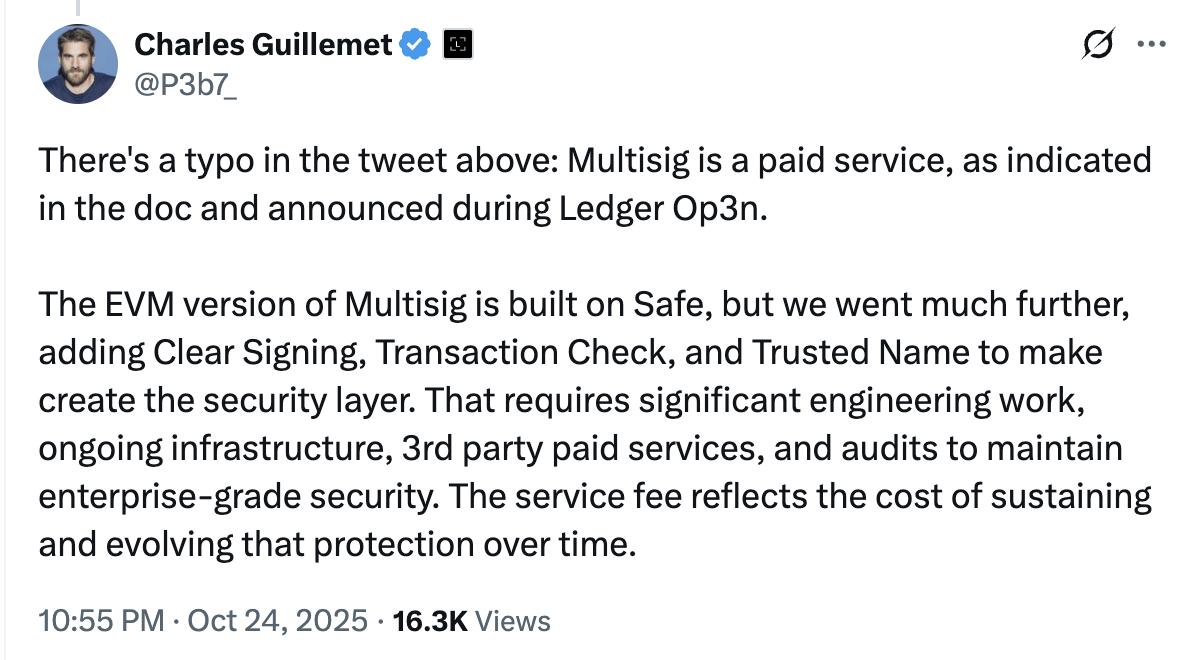Ledger's new multisig feature is causing controversy among users and developers: many welcome the upgrade, but are unhappy with the per-transaction fee model.
Launched alongside the Nano Gen5 device and the new Ledger Wallet app (replacing Ledger Live), this is the first time the leading digital wallet has built its own internal authentication system, allowing multiple people to sign transactions through the company's servers instead of using third-party tools like Specter or Sparrow.
However, Ledger has been criticized for charging $10 per regular transaction and 0.05% for ERC-20 Token transactions, not including network Gas Price .
Adding to the confusion, CTO Charles Guillemet initially posted on X that “Ledger Multisig is free,” but later clarified : “That was a typo. Multisig is a paid service, as clearly stated in the documentation and published at Ledger Op3n.” He argued that the fee reflected the costs of infrastructure and security audits the company maintains.

Some security experts, like “pcaversaccio” from SEAL-911, have criticized Ledger for turning multisig users into a source of revenue, calling it a “money-grabbing tactic” that goes against the company’s original spirit of freedom. Similarly, Avalanche developer “Sarnavo” has argued that Ledger is turning security into a barrier to payment, especially since their app remains closed-source, preventing users from verifying how their data is handled.
“Security should not be commoditized on a transaction-by-transaction basis,” he writes.
Additionally, the new multisig feature does not support the Nano S, Ledger’s most popular legacy wallet. Lacking the memory to run the “clear signing” feature and the new authentication system, many loyal users feel “left out” – one user commented that Nano S owners are now virtually left out.
The post Ledger launches new multisig but is criticized for high fees appeared first on CoinMoi .








